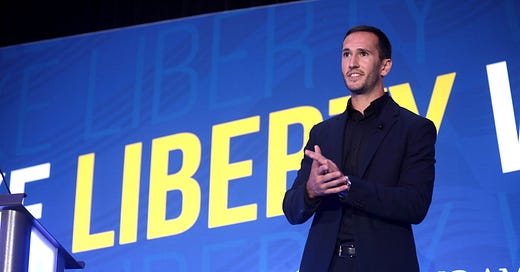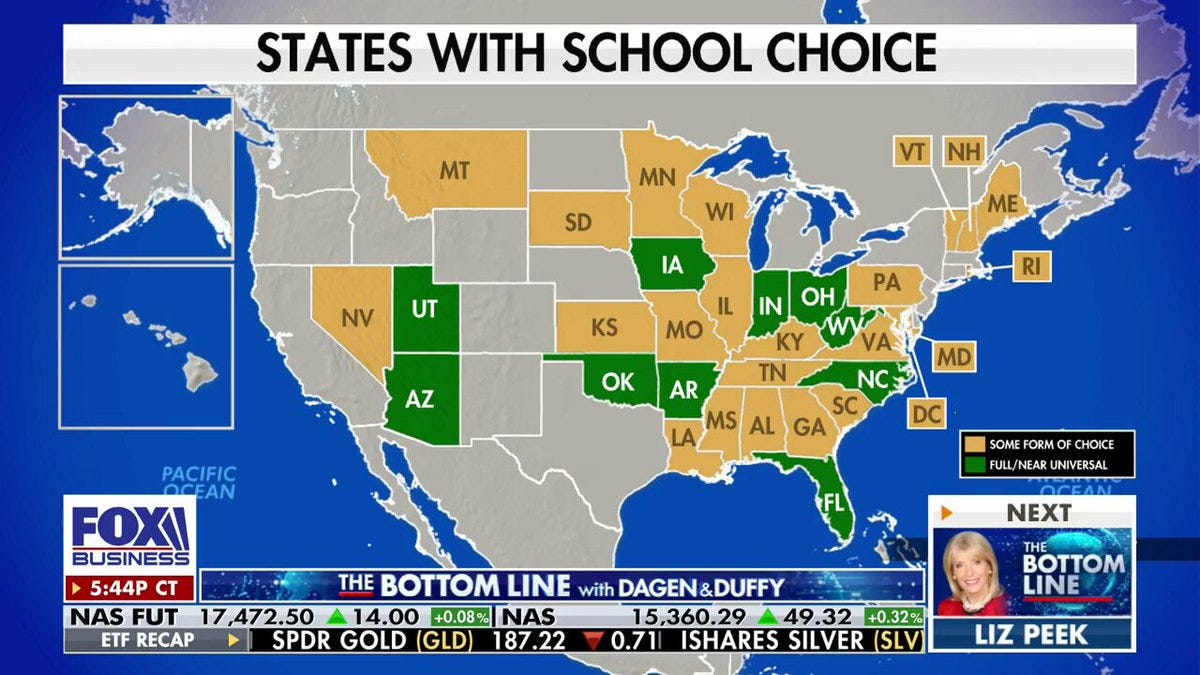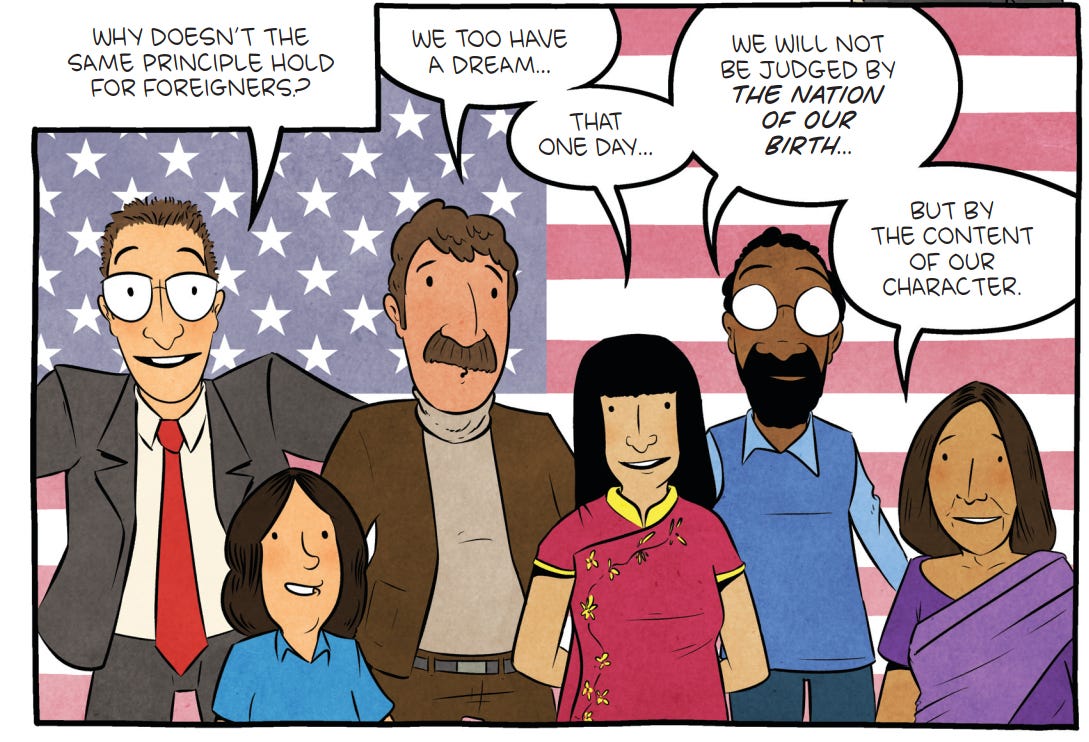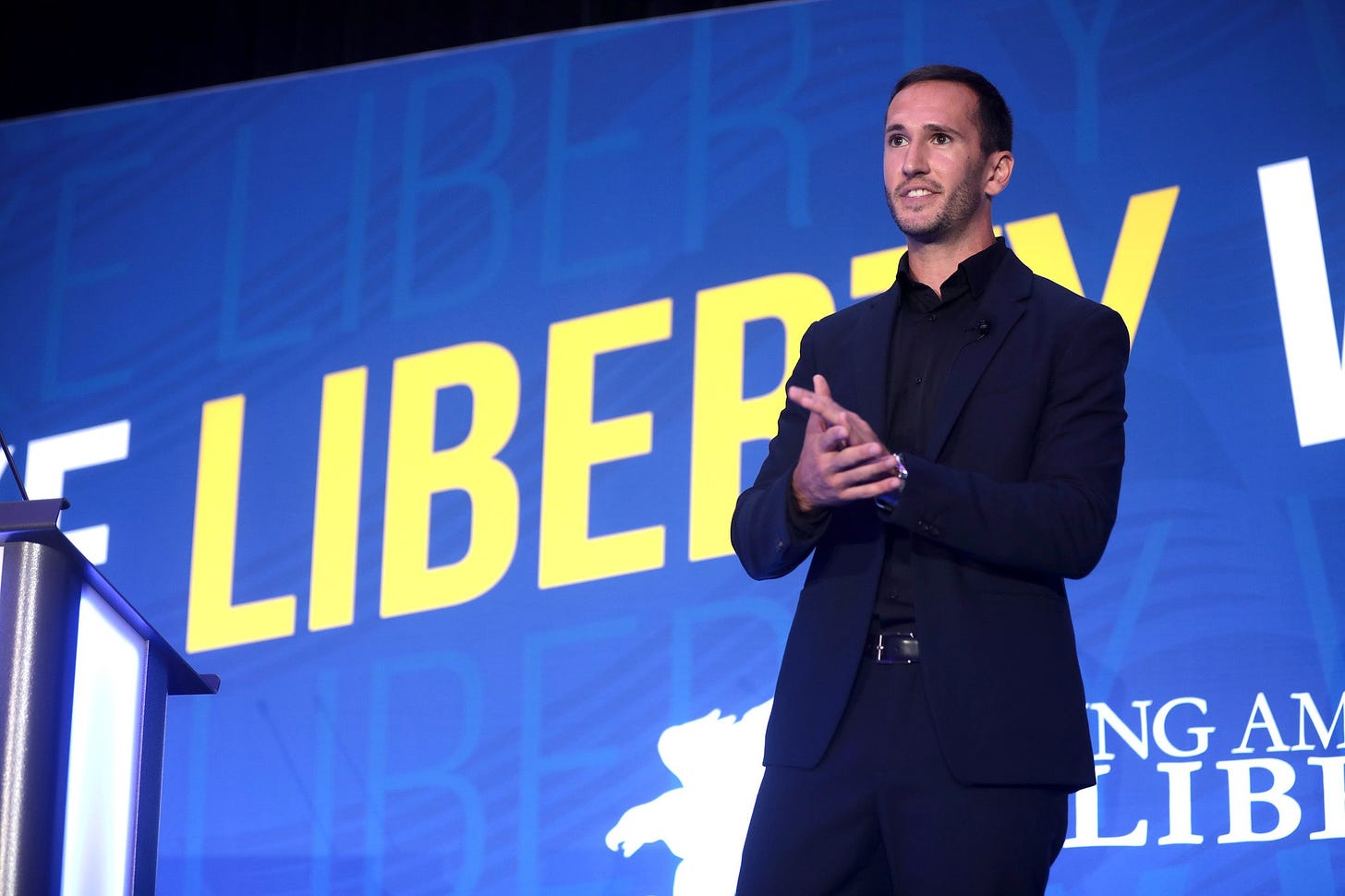America’s school choice advocates have been making great arguments for decades. Only recently, though, have they started to actually win arguments.
What changed? In The Parent Revolution, Corey DeAngelis argues that the key variable was a change in strategy. Stop trying to persuade your enemies. Instead, redouble your efforts on your friends. Here’s me and Corey on Corey; I’m in blockquotes, he’s in double blockquotes:
For decades, he explains, school choice advocates focused on bipartisan conversion, but had little to show for it:
Decades of appealing to Democrats using liberal arguments for school choice—e.g., that it expands educational opportunity for the most disadvantaged—had failed to result in more than token support from a small number of elected Democrats. The bipartisan approach had a certain appeal to it, but it was not enough to form a winning coalition… But if the Democrats weren’t on board anyway, what did we have to lose?
Bizarrely, major education reform organizations had long been shifting from “make friends wherever you find them” to “make friends wherever you least expect to find them”:
Over time, the education reform movement had begun to drift to the political left—and spurn the political right… In [1999], political-campaign contributions by education reform advocates was nearly “evenly split between Democratic and Republican candidates.” But by 2019, more than 90 percent of the contributions were going to Democrats, even though Republican legislators were much more likely to support education reforms like school choice.
In 2020, DeAngelis started pushing the opposite strategy: work with the friends you already have to get tangible results – and hope those results attract new friends.
Most Republicans already were on board for school choice as it aligns with their general support for families, freedom, and market competition. But there were enough GOP holdouts in deep red states’ legislatures to block reform. Forming a winning coalition would either require persuading a sizeable number of Democrats to buck one of their most powerful constituencies, or persuading a similar number of Republicans to side with their base, key coalitional allies, and a majority of parents. Which seems like the easier lift?
All of which suggests a Grand Libertarian Strategy for state-level politics. I call it “DeAngelis Generalized.” Here, in a nutshell, is what U.S. libertarian activists should do:
In Red States:
Push pro-freedom policies with conservative appeal using conservative rhetoric.
Stop pushing pro-freedom policies with primarily progressive appeal.
In Blue States:
Push pro-freedom policies with progressive appeal using progressive rhetoric.
Stop pushing pro-freedom policies with primarily conservative appeal.
I know “stop pushing pro-freedom policies” never sounds good to libertarians. But the logic is sound. Resources are finite. Energy is finite. Friendship is finite. So use your resources, energy, and friendship in whatever way gets you the freest bang for your buck.
What does this mean in practice? To start:
In Red States, push school choice (duh), tax cuts, privatization, deregulation, and tort reform. Focus on DEI abolition, rollback of persecution of fossil fuels, selling off state land, and welfare state austerity. Aggressively push user fees instead of tax cuts: “Taxpayers shouldn’t have to subsidize hobbies.” For housing, focus on slashing minimum lot sizes for single family homes rather than “market urbanism.” Rhetorically, reframe even long-standing forms of Big Government as heinously “woke.”
In Blue States, thwart enforcement of federal immigration laws, push sanctuary policies (especially non-enforcement against employers) and drug liberalization. For housing, focus on “market urbanism” — allowing more skyscrapers and multifamily, and ending parking mandates. Rhetorically, equate any form of immigration enforcement with Trump — and treat legal employment of illegal immigrants as a crucial matter of basic human rights. Try to redirect all drug enforcement to visible public abuse. Even very leftist states aren’t ready for full legalization, but once addict encampments disappear, the public will mostly stop caring.
The argument for redirecting activism to the state level has long been strong. Federal politics is at least 10x as exciting as state politics. Most Americans find state politics utterly boring. Which makes it much easier for concentrated interests — including libertarian activists — to prevail.
What DeAngelis’ Red State Strategy shows is that, for libertarians, redirecting activism to the state level is even more promising than it looks. Precisely because libertarianism is “neither left nor right,” we can simultaneously advance freedom in both Red and Blue States.
The trick is to proverbially give dominant parties “a push in the free direction.” Push Red States toward right-coded liberty. Push Blue States toward left-coded liberty. Eagerly sell ideas each side may actually listen to — and stop alienating potential friends when you know their ultimate annoyed reaction is going to be, “Hard pass.”
Won’t this just alienate both sides? Probably not, because the libertarians in Red States are very different people from the libertarians in Blue States. They’ll run different organizations, run with different crowds, and use different words. The fact that libertarians from around the country occasionally powwow at FreedomFest or PorcFest will barely register with non-libertarian allies back home.
Do libertarians really have enough common ground with Democrats to justify the effort? Nationally, I fear not. The least-bad federal strategy for libertarians is to go all-in on the Liberty Caucus. (Exception: Anyone working on immigration with Alex Nowrasteh should stick with the Democrats). The same holds inside Red States: A libertarian-progressive alliance in Texas is a sad joke. Far better for libertarians to become fast friends with ruling Republicans and urge them to follow their most freedom-loving instincts.
In Blue States, however, libertarian activists have to find common ground with Democrats or give up. Fortunately, Democrats are vastly more libertarian than Republicans on the all-important issue of immigration. Progressives really do feel guilty about enforcing these monstrous violations of humans’ basic right to live and work in any country they choose. Libertarians in Blue States should do everything they can to appeal to progressive consciences.
Thanks to the Free State Project, libertarians already punch way above weight in New Hampshire. But we can do a lot better. There is nothing unlibertarian about having priorities. Playing Don Quixote — pushing left-coded liberty in Red States and right-coded liberty in Blue States — may be a fun way to LARP. But libertarians who actually want to make the world freer will Generalize DeAngelis. Find freedoms that ruling parties already appreciate — then start selling them upgrades.
I understand if this strategy sticks in your throat, because it definitely sticks in mine. That’s part of why I’m an academic rather than an activist. The ugly truth, however, is that libertarians have to partner with non-libertarians to advance the cause of liberty. Once you accept that, why not self-consciously profile the partnerships that are actually likely to work?







This won't work in Blue States.
Blue Staters don't support quasi-libertarian policies for libertarian reasons, they support those policies because they WANT to violate property rights. Their pro-criminal anti-property stance is the reason they support drug decriminalization but not drug legalization. When people try to get rid of homeless encampments, Blue Staters call it "criminalizing homelessness." The violation of property rights is the point.
I don't have to talk libertarians into this, but at the national level the most useful thing that could be done is to get rid of the SALT deduction. SALT subsidizes the Blue State model over the Red State Model. Moreover, it subsidizes the worst aspects of the blue state model. The same could be said about mortgage interest deduction.